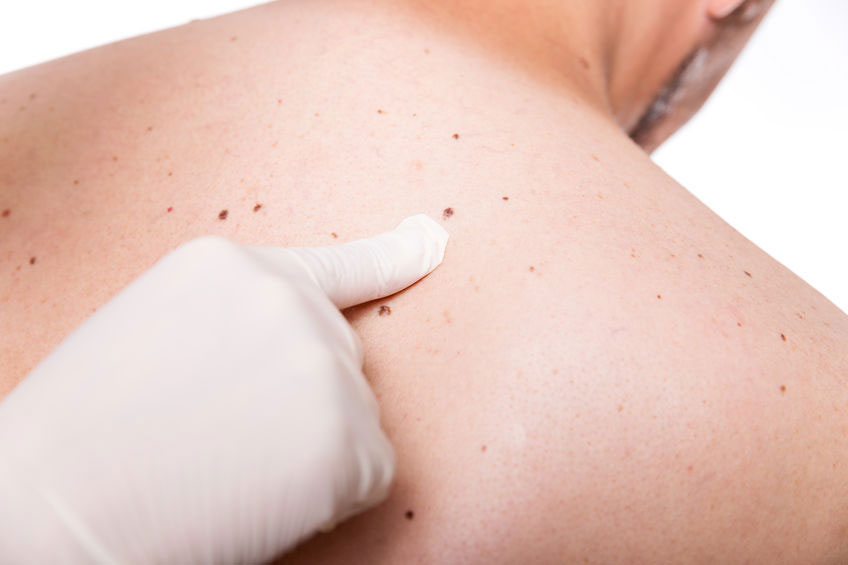It’s summer time, and with more skin on show and foreign travel on the horizon we wanted to talk about moles. Why? Because it’s all too easy to become accustomed to our predictable, brown dots. Our ‘forever’ skin marks which we’ve had for most of our adult lives. The trouble is that these neat, round companions can change over time. Increasing in size, changing in shape, turning scaly and becoming a cause for concern with age. That’s why we urge patients to take a fresh look at their moles, to help here’s a guide from Dr Athreya, an experienced GP at our private Shenfield practice…
Considering Mole Removal? First here are some facts:
- Most adults will have between 10 and 40 moles on their body by the time they reach 40.
- Some are benign and do not need treatment, but others cause concern.
- If a mole grows or you start to notice asymmetrical or jagged edges, see a doctor who may recommend mole removal.
- 13,000 people a year suffer from skin cancer, but majority survive for 10 years.
What is a mole?
Moles are small coloured spots on the skin made up of cells called melanocytes, which produce the colour (pigment) in your skin. The scientific name for moles is melanocytic naevi.
Moles are often a brownish colour, although some may be darker or skin-coloured. They can be flat or raised, smooth or rough, and some have hair growing from them. Moles are usually circular or oval with a smooth edge.
Moles can change in number and appearance. Some fade away over time, often without you realising. They also sometimes respond to hormonal changes, for example during:
- pregnancy – when they may get slightly darker
- teenage years – when they increase in number
- older age – when they may disappear from 40 to 50 years of age onwards
When and why do moles develop?
Some moles are present at birth, although most develop during the first 30 years of life. People with fair skin often have more moles than people with darker skin.
You are more likely to develop lots of moles, or a certain type of mole, if they are common in your family.
Where you were brought up may also make a difference – for example, if you have spent a lot of time in the sun, you may have a lot of small moles.
Harmless moles
Most moles are completely harmless. However, they may be unsightly and affect your confidence. Moles can also be a nuisance, for example if they regularly catch on your clothing or you cut them while shaving.
Our experienced GPs carry out cosmetic mole removal. It is a quick, simple and relatively painless procedure carried out here in our private Shenfield clinic. Contact us today >>
Next, we’ll look at the different types of mole. From common benign moles, to moles which cause concern, and finally Malignant Melanoma (skin cancer).
- Common Benign Moles
- Seborrhoeic Keratosis – These benign warty growths appear in adult life and may be multiple. It is a sign of skin aging.
- Intradermal Naevi – Skin coloured lesions which arise from deeper within the skin and usually raised above the surface.
- Papilloma and Skin Tags – Fleshy growths that can appear on skin as we get older. Commonly found in creases.
- Junctional Naevus and Compound Naevus – Common, pigmented lesions that can be present from birth or acquired. Junctional Naevi are flat or minimally elevated and can occur anywhere on the skin. Compound Naevi arise from the Junctional Naevi and are raised above the skin. They may have uneven pigmentation.
- Moles which cause concern
- Actinic keratosis (AK) – A common scaly spot found on sun damaged skin – usually a bald scalp, face, ears and upper trunk. Whilst harmless in themselves and easily removed, multiple AK’s increase the risk of one lesion progressing over a longer period to a skin cancer, such as Squamous Cell Carcinoma (SCC).
- Bowens Disease (BD) – BD or “intra-epidermal” SCC are early skin cancers that are confined to the surface skin cells. The main cause, as for AK, is sun damage (Ultra Violet Light) and can occur in any part of the skin, including rarely under nails, but mainly in sun exposed sites. The look like irregular scaly patches, usually red but may also be pigmented. They can be removed in multiple ways, usually by freezing or cauterising, but also certain creams may be used.
- Basal Cell Carcinomas (BCC) – A locally invasive skin tumour (very rarely does it spread), and though benign can cause significant local damage if not treated in a timely manner. It mainly occurs in sun damaged skin. It appears as a slowly growing patch or nodule, and may be skin coloured, red or even pigmented, Classically, they have a rolled edge with central ulceration. Most are removed surgically, but more superficial BCC’s may be destroyed by using certain creams or freezing.
- Squamous Cell Carcinomas (SCC) – These occur when the cancer cells that make up Bowens disease spread beyond the surface area and to distant tissues. They are more commonly found in the elderly and can look like enlarged scaly or crusty lumps. They can take week or months to grow and can be tender or ulcerate. After diagnosis, these cancers are treated surgically, perhaps in combination with radiotherapy.
- Malignant Melanoma and Skin Cancer
A malignant melanoma can be defined as cancerous growth of the pigment cells, the melanocytes, found in the surface layer of the skin. It is very much more common in light skinned people than dark skinned.
There is a rise in cases of melanoma brought about with the greater exposure of unprotected lighter and more susceptible skin to the sun with, for example, frequent foreign travel.
It can occur at ANY age but is rare in children and most frequently found in the 45-64 years age group.
Malignant melanoma is most commonly found on the BACKS of men and the LEGS of women, but sites include nails, eye, sole of the foot, brain and vagina.
The first sign of a melanoma is usually an unusual looking freckle or mole and may be detected at an early stage when it is only a few millimetres in diameter, but it may grow to several centimetres in diameter before it is diagnosed.
A melanoma may have a variety of colours including tan, dark brown, black, blue, red and, occasionally, light grey. Some melanomas may lack pigmentation altogether.
Do not delay. If you are concerned about a mole contact our surgery immediately.
MOLE AWARENESS
Glasgow 7-point checklist
Major features:
- Change in size
- Irregular shape
- Irregular colour
Minor features:
- Diameter >7 mm
- Inflammation
- Oozing
At Essex Private Doctors our modern minor surgery suite is fully equipped to provide mole removal to patients. We have extensive experience in dealing with all sorts of skin conditions and are trusted by patients who require prompt treatment and investigation of moles which cause concern.
Our experienced GPs use the latest medical equipment and techniques, including skin surgery and laser removal.
If you are worried about a mole, or have questions relating to treatment please contact our Shenfield surgery on 01277 201 001






